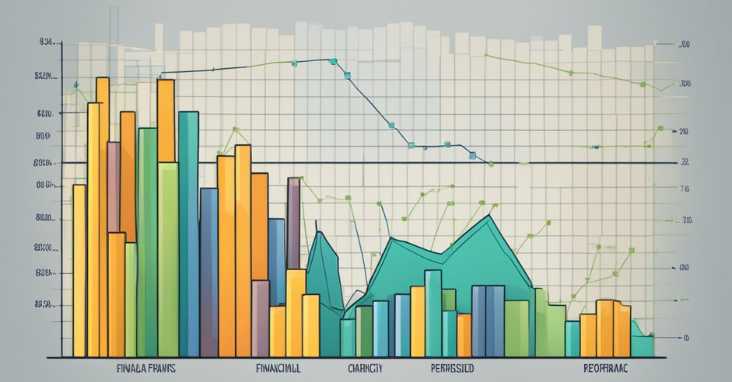What are the differences between COO vs CEO? COO manages day-to-day operations, targets efficiency. CEO sets vision, strategy, oversees company direction. Roles differ but both vital.
When it comes to running a company, there are two key positions that are crucial to its success: the CEO and the COO. While both of these positions are important, they have different roles and responsibilities. The CEO is responsible for the overall strategy and direction of the company, while the COO is responsible for the day-to-day operations. Understanding the differences between these two positions is important for anyone looking to work in or run a company.

One of the key differences between the COO vs CEO is their level of strategic involvement. The CEO is responsible for setting the overall direction of the company and making sure that everyone is working towards the same goals. The COO, on the other hand, is responsible for executing the CEO’s vision and making sure that the day-to-day operations are running smoothly. This means that the CEO is more involved in the long-term planning of the company, while the COO is more focused on the short-term execution.
Another key difference between the CEO and COO is their interaction with the board and other members of the C-suite. The CEO is typically the face of the company and is responsible for communicating with shareholders, customers, and other stakeholders. The COO, on the other hand, is more focused on internal communication and working with other members of the C-suite to ensure that everyone is working towards the same goals. This means that the CEO is more focused on external communication, while the COO is more focused on internal communication.
Key Takeaways
- The CEO is responsible for overall strategy and direction, while the COO is responsible for day-to-day operations.
- The CEO is more involved in long-term planning, while the COO is more focused on short-term execution.
- The CEO is more focused on external communication, while the COO is more focused on internal communication.
Source: Investopedia: COO vs CEO
Roles and Responsibilities
CEO Responsibilities
The Chief Executive Officer (CEO) is the highest-ranking executive in an organization and is responsible for the overall success of the company. The CEO’s primary responsibility is to set the vision, strategy, and long-term goals for the company. They are responsible for ensuring that the company is moving in the right direction and making progress towards achieving its goals.
The CEO is also responsible for the day-to-day operations of the company. They work closely with the Chief Operating Officer (COO) to ensure that the company’s policies and procedures are being followed. The CEO is responsible for making important decisions that affect the company’s future, such as mergers and acquisitions, major investments, and changes in leadership.
In terms of leadership and management, the CEO is responsible for setting the tone for the company’s culture and values. They are responsible for hiring and firing key executives, and for ensuring that the company has a strong leadership team in place. The CEO is also responsible for communicating with shareholders, investors, and the public about the company’s performance and future plans.
COO Responsibilities
The Chief Operating Officer (COO) is responsible for the day-to-day operations of the company. They work closely with the CEO to ensure that the company’s policies and procedures are being followed and that the company is running smoothly.
The COO is responsible for implementing the CEO’s vision and strategy and for ensuring that the company is making progress towards its long-term goals. They are responsible for managing the company’s resources, including its finances, human resources, and technology.
In terms of leadership and management, the COO is responsible for ensuring that the company has the right people in the right positions and that they are working together effectively. They are responsible for developing and implementing policies and procedures that ensure the company is operating efficiently and effectively.
Overall, the CEO and COO work closely together to ensure the success of the company. While the CEO is responsible for setting the vision and long-term goals, the COO is responsible for ensuring that the company is running smoothly on a day-to-day basis.
According to Investopedia, “The CEO is ultimately responsible for the success or failure of the organization, while the COO is responsible for the day-to-day operations.” [1]
Strategic Involvement
CEO’s Strategic Direction
The CEO is responsible for setting the overall strategic direction of the business. They are involved in long-term planning and make strategic decisions that align with the business goals. The CEO’s role is to ensure that the company is moving in the right direction and that the business is growing.
The CEO’s strategic involvement includes developing and implementing strategies that help the business achieve its goals. They work closely with the COO to ensure that the operational functions of the business are aligned with the strategic direction. The CEO is also responsible for identifying new growth opportunities and working with the executive team to capitalize on them.
According to Investopedia, the CEO is the highest-ranking executive in a company and is responsible for making major corporate decisions, managing the overall operations and resources of a company, and acting as the main point of communication between the board of directors and the corporate operations.
COO’s Operational Strategy
The COO is responsible for the operational functions of the business. They are involved in developing and implementing operational strategies that align with the business goals. The COO’s role is to ensure that the business is running efficiently and effectively.
The COO’s operational strategy includes managing the day-to-day operations of the business, overseeing the production process, and ensuring that the business is meeting its targets. They work closely with the CEO to ensure that the operational functions of the business are aligned with the strategic direction.
According to The Balance Small Business, the COO is responsible for overseeing the day-to-day administrative and operational functions of a business. They work closely with the CEO to develop and implement strategies that help the business achieve its goals.
Interaction with the Board and C-Suite
CEO and the Board of Directors
The CEO is responsible for leading the company and ensuring that it achieves its strategic objectives. To accomplish this, the CEO must work closely with the board of directors, who are responsible for overseeing the company’s management and providing strategic guidance.
The CEO must keep the board informed about the company’s performance, financial health, and any significant developments that could affect the company’s future. Additionally, the CEO must work with the board to develop and implement the company’s strategic plan.
The CEO must also maintain a good relationship with the board, which includes building trust, providing transparency, and being responsive to the board’s concerns. This relationship is critical to the CEO’s success, as the board has the power to hire and fire the CEO.
COO and C-Suite Executives
The COO is responsible for overseeing the company’s day-to-day operations, which includes managing the c-suite executives. The COO must work closely with the other executives to ensure that the company operates efficiently and effectively.
The COO must maintain a good relationship with the other executives, which includes building trust, providing transparency, and being responsive to their concerns. This relationship is critical to the COO’s success, as the other executives have the power to influence the COO’s decisions.
The COO must also work with the other executives to develop and implement the company’s strategic plan. This requires the COO to have a good understanding of the company’s goals and objectives, as well as the resources available to achieve them.
Overall, the CEO and COO must work closely with the board and c-suite executives to ensure that the company achieves its strategic objectives. This requires building strong relationships, maintaining transparency, and being responsive to concerns.
For more information on the differences between the roles of COO vs CEO, please refer to this Harvard Business Review article.
Financial and Performance Metrics

CEO’s Focus on Profitability
As the top executive of a company, the CEO is primarily responsible for ensuring the financial success of the business. This means that the CEO’s focus is on profitability, which is measured by the company’s revenue and profit margins. The CEO sets financial goals and develops strategies to achieve them, and is accountable to shareholders for the company’s financial performance.
To achieve profitability, the CEO must closely monitor financial performance metrics such as revenue growth, profit margins, and return on investment. The CEO also oversees financial planning and budgeting to ensure that the company is on track to meet its financial goals. Additionally, the CEO is responsible for making strategic decisions that impact the company’s financial status, such as mergers and acquisitions.
COO’s Efficiency Metrics
While the CEO is focused on profitability, the COO is responsible for ensuring that the company is operating efficiently. The COO’s metrics are focused on efficiency, which is measured by business metrics such as production levels, cost per unit, and cycle time. The COO oversees operations and is responsible for ensuring that the company’s resources are being used effectively.
To achieve efficiency, the COO must closely monitor performance metrics such as production levels, cost per unit, and cycle time. The COO also oversees the development and implementation of business processes and systems to improve efficiency. Additionally, the COO is responsible for managing the company’s supply chain to ensure that resources are being utilized effectively.
Overall, while the CEO focuses on profitability and financial performance, the COO focuses on efficiency and operational performance. By working together, the CEO and COO can ensure that the company is successful both financially and operationally.
Here is a resource for more information on the role of the COO in a company.
Organizational Leadership and Culture

CEO’s Role in Company Culture
The CEO is responsible for setting the tone and direction of the company culture. This includes defining the company’s values, mission, and vision, and ensuring that they are communicated effectively to all employees. The CEO must also lead by example and embody the company culture in their actions and decisions.
In addition to setting the tone, the CEO must also actively work to maintain and improve the company culture. This includes regularly assessing the culture and making changes as needed to ensure that it aligns with the company’s goals and values. The CEO must also ensure that all company policies and practices support the desired culture.
COO’s Management of Internal Operations
While the CEO focuses on company culture and external factors, the COO is responsible for managing the internal operations of the company. This includes overseeing departments such as finance, human resources, and operations, and ensuring that they are working together effectively to achieve the company’s goals.
The COO must also ensure that all internal processes and procedures are efficient and effective, and that they support the company’s overall strategy. This requires strong leadership skills, as well as an understanding of the company’s goals and values.
Overall, both the CEO and COO play important roles in shaping the organizational leadership and culture of a company. By working together effectively, they can create a strong and cohesive culture that supports the company’s goals and values.
To learn more about the differences between the roles of CEO and COO, check out this article from Harvard Business Review: The Differences Between a COO vs CEO.
Communication and Reporting

CEO’s External Communication
The CEO is responsible for external communication, which includes communicating with investors, media, and the public. The CEO must present the company’s vision, strategy, and financial performance to the public and investors. The CEO must also communicate with the media to ensure that the company’s message is accurately conveyed to the public.
The CEO must also communicate with the board of directors, which is responsible for overseeing the company’s management. The CEO must provide regular reports to the board of directors on the company’s financial performance, strategic initiatives, and other important matters.
To ensure effective communication, the CEO must have excellent communication skills and the ability to convey complex information in a clear and concise manner. The CEO must also be able to listen to feedback and respond appropriately.
COO’s Internal Reporting
The COO is responsible for internal reporting, which includes communicating with teams and managing internal affairs. The COO must ensure that the company’s operations are running smoothly and that teams are working effectively. The COO must also provide regular reports to the CEO on the company’s operations and performance.
The COO must have excellent management skills and the ability to manage teams effectively. The COO must also have a deep understanding of the company’s vision and strategy to ensure that operations are aligned with the company’s goals.
To ensure effective communication, the COO must have excellent communication skills and the ability to convey complex information in a clear and concise manner. The COO must also be able to listen to feedback from teams and respond appropriately.
In conclusion, effective communication and reporting are critical for the success of any company. The CEO and COO must work together to ensure that communication is effective both internally and externally. By doing so, they can ensure that the company’s vision and strategy are effectively communicated and that operations are aligned with the company’s goals.
Here is a high authority external resource on the role of COO in a company.
Career Path and Experience

Becoming a CEO
The path to becoming a CEO is often a long and challenging one. CEOs typically have extensive experience in their industry, and have worked their way up through the ranks to reach the top executive position. They may have held a variety of executive positions, such as Chief Operating Officer (COO), Chief Financial Officer (CFO), or Chief Marketing Officer (CMO), before becoming CEO.
CEOs must have strong leadership skills, and be able to make strategic decisions that will guide the company towards success. They must also have a deep understanding of the industry in which the company operates, and be able to anticipate and respond to changes in the market.
To become a CEO, individuals must typically have a bachelor’s degree, and often a master’s degree in business administration (MBA) or a related field. They may also have certifications or other specialized training in areas such as finance, marketing, or operations.
Becoming a COO
The path to becoming a COO is similar to that of a CEO, but with a greater emphasis on operations and management. COOs are responsible for overseeing the day-to-day operations of the company, and ensuring that all departments are working together effectively.
COOs may have experience in a variety of executive positions, such as Chief Financial Officer (CFO), Chief Information Officer (CIO), or Chief Marketing Officer (CMO). They must have strong leadership skills, and be able to manage and motivate large teams of employees.
To become a COO, individuals must typically have a bachelor’s degree, and often a master’s degree in business administration (MBA) or a related field. They may also have certifications or other specialized training in areas such as operations management or supply chain management.
According to a Harvard Business Review article, many COOs go on to become CEOs, but not all CEOs have experience as COOs. This highlights the importance of having a diverse range of executive positions and experiences in order to succeed in top leadership roles.
Compensation and Benefits

CEO Compensation
CEOs are typically the highest paid executives in a company, and their compensation packages often include a combination of salary, bonuses, stock options, and other benefits. According to a report by the Economic Policy Institute, the average CEO compensation for the top 350 publicly traded companies in the United States was $21.3 million in 2019. This figure includes salary, bonuses, stock options, and other forms of compensation.
CEOs often receive a significant portion of their compensation in the form of stock options or shares. This is because it aligns their interests with those of the company’s shareholders, as the CEO’s wealth is tied to the performance of the company’s stock. However, this can also lead to a focus on short-term gains at the expense of long-term growth, as CEOs may prioritize actions that will boost the stock price in the short term over investments that will benefit the company in the long term.
COO Compensation
COOs, while still high-level executives, typically receive lower compensation packages than CEOs. According to data from Payscale, the average salary for a COO in the United States is $143,000 per year. However, this figure can vary widely depending on the size and industry of the company, as well as the COO’s level of experience.
COOs may also receive bonuses and stock options as part of their compensation packages, although these are typically lower than those of the CEO. The COO’s role is often focused on the day-to-day operations of the company, rather than long-term strategy, so their compensation may reflect this.
It is worth noting that the compensation and benefits packages of both CEOs and COOs can vary widely depending on the company and industry. Factors such as company size, profitability, and shareholder expectations can all play a role in determining executive compensation.
For more information on executive compensation, including trends and best practices, see this report by the National Association of Corporate Directors.
Differences Between COO vs CEO

The CEO and COO are both c-level executives, but they have different roles and responsibilities within an organization. The CEO is the chief executive officer and is responsible for setting the overall direction of the company and making major decisions. The COO, on the other hand, is the chief operations officer and is responsible for the day-to-day operations of the company.
One of the main differences between the COO vs CEO is their goals. The CEO is focused on the long-term success of the company and is responsible for setting the company’s strategy and vision. The COO, on the other hand, is focused on the short-term success of the company and is responsible for ensuring that the company is running smoothly on a day-to-day basis.
Another difference between the COO vs CEO is their position within the organization. The CEO is the highest-ranking executive in the company and is ultimately responsible for all aspects of the business. The COO is the second-in-command and is responsible for managing the day-to-day operations of the company.
When it comes to decision-making, the COO vs CEO have different roles. The CEO is responsible for making major decisions that affect the direction of the company, while the COO is responsible for making operational decisions that affect the day-to-day running of the company.
In summary, the CEO and COO have different roles and responsibilities within an organization. The CEO is the chief executive officer and is responsible for setting the overall direction of the company, while the COO is the chief operations officer and is responsible for the day-to-day operations of the company. For more information on the differences between CEO and COO, check out this link from Investopedia.
Frequently Asked Questions

What are the primary differences in responsibilities between a COO vs CEO?
The CEO is typically responsible for the overall direction and strategy of the company, while the COO is responsible for the day-to-day operations and execution of the company’s plans. The CEO sets the vision and goals for the company and ensures that they are being met, while the COO focuses on the implementation of those plans.
How do the roles of a COO vs CEO, and CFO differ within a company’s hierarchy?
The CEO is typically at the top of the company hierarchy and is responsible for the overall direction and strategy of the company. The COO is often second in command and is responsible for the day-to-day operations of the company. The CFO is responsible for the financial management of the company, including budgeting, forecasting, and financial reporting.
What distinguishes the salary expectations for a COO vs CEO?
According to a report by Payscale, the median salary for a CEO is significantly higher than that of a COO. This is because the CEO is typically responsible for the overall success of the company and is therefore compensated accordingly.
In what ways does a COO contribute to the operations of a business?
The COO is responsible for overseeing the day-to-day operations of a business, including production, marketing, and sales. They work closely with other members of the executive team to ensure that the company’s goals are being met and that operations are running smoothly.
Which position typically holds more authority in a corporation: the COO or the CEO?
The CEO typically holds more authority in a corporation because they are responsible for the overall direction and strategy of the company. However, the COO is often second in command and has significant influence over the day-to-day operations of the business.
How do the functions of a COO vs CEO, and President differ in corporate governance?
The CEO is typically responsible for the overall direction and strategy of the company, while the COO is responsible for the day-to-day operations. The President may have a more specific focus, such as overseeing a particular department or division within the company. Ultimately, the specific roles and functions of each position may vary depending on the company’s size and industry.
For more information on the differences between COO vs CEO, check out this article by Investopedia, a trusted source on financial and business topics.
Compare hundreds of HR Management Software in our Software Marketplace















